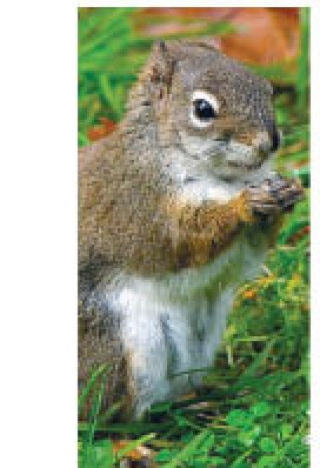Last winter, we were surprised by a red squirrel as we trekked through the forest alongside Oyster River.
The occasion stands out as a nature highlight, simply because that pretty little mammal is so seldom seen. Tall evergreen trees near the river provide optimum habitat for the species, which prefers to live in woodlands near a water source.
Squirrels are never a common sight in Campbell River…or anywhere on the central or north Island. The wild red (tamiasciurus hudsonicus) is the only squirrel native to Vancouver Island, and one that prefers to stay well-hidden within deep forests. It’s always an exceptional thrill to see this shy charmer scrambling up a tree or munching on a conifer cone.
Call them super-squirrels, as these petite, tawny-coloured animals, tipping the scales at only 230 grams (about half a pound) are nevertheless lively and energetic, able to leap long distances at a single bound, and skilled at running along the underside of branches.
At twice the size, eastern grey squirrels (Sciurus carolinensis) – which appear in grey, brown and black form – are not native to British Columbia. This larger cousin to our native Red squirrel was introduced to Vancouver Island in 1966 when three grey squirrels imported from Ontario escaped from a Metchosin game farm. They rapidly spread up-island, now ranging as far north as Duncan.
On Vancouver Island, grey squirrels are classified as “pests” under Section C of the Wildlife Act. They threaten the native red squirrels by competing for tree cavities and food, ultimately displacing the wild species.
The introduced “greys” are known to transfer diseases to the “reds.” Our native red squirrel is protected as a furbearer under the B.C. Wildlife Act.
Out in the woods, round grass balls are sometimes located high in the tree tops. Red squirrels build large grassy nests called dreys which resemble balls about 20-25 cm in diameter. Grey squirrel nests are larger, usually made of leaves, and found higher up in trees, on a branch platform.
Often heard before seen, red squirrels vocalize by chattering, “clucking” or whistling high-pitched bird-like tones.
Omnivores, they dine on an adaptable diet, feeding in winter on seeds, nuts and conifer cones, bird eggs, or insects. In summer, they opt for some produce, adding in berries, mushrooms, buds and flowers.
